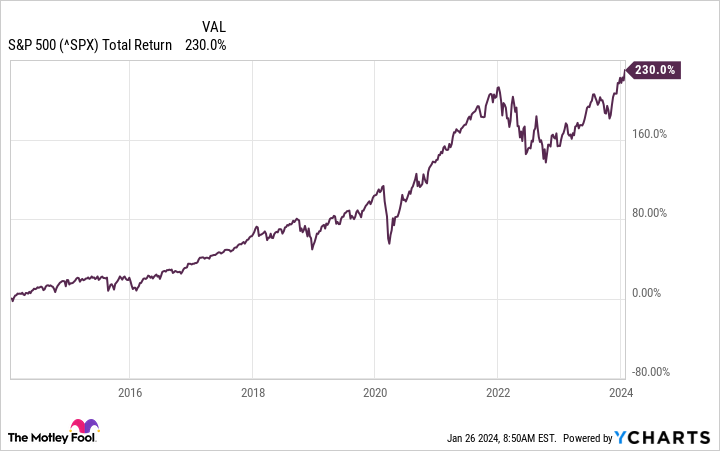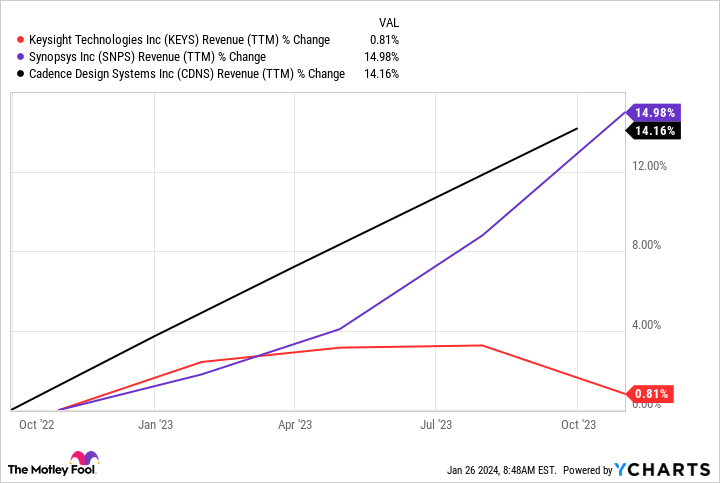With the Synopsys Mega-Merger on the Horizon, Does This Top Chip Design Company Stand a Chance? – The Motley Fool
Founded in 1993, The Motley Fool is a financial services company dedicated to making the world smarter, happier, and richer. The Motley Fool reaches millions of people every month through our premium investing solutions, free guidance and market analysis on Fool.com, top-rated podcasts, and non-profit The Motley Fool Foundation.
Founded in 1993, The Motley Fool is a financial services company dedicated to making the world smarter, happier, and richer. The Motley Fool reaches millions of people every month through our premium investing solutions, free guidance and market analysis on Fool.com, top-rated podcasts, and non-profit The Motley Fool Foundation.
You’re reading a free article with opinions that may differ from The Motley Fool’s Premium Investing Services. Become a Motley Fool member today to get instant access to our top analyst recommendations, in-depth research, investing resources, and more. Learn More
Keysight Technologies is facing some stiff competition, and one of its peers was recently acquired.
The two leading semiconductor design software and verification platforms — Synopsys (SNPS 0.87%) and Cadence Design Systems (CDNS 0.51%) — have been off to the races the last few years, especially as investors have caught wind of how important these companies are to the development of AI and other advanced computing technology.
Synopsys and Cadence are up 100% and 115%, respectively, over the past three years alone. That run has culminated in Synopsys’ recently announcement intension to acquire design and physics simulation software leader Ansys (ANSS 0.64%) in an industry mega-merger.
But there’s another company that also plays in this chip and computing system design space: Keysight Technologies (KEYS 1.51%). Its performance has been downright pedestrian the last few years. Does it stand a chance as peers merge and get bigger?
Keysight is best known for its electronic and computing system testing and emulation equipment (emulation meaning a system that can imitate how a designed component or a new system will behave, an important step in the design process as it can save money before anything moves on to mass manufacturing).
It’s a highly competitive space. Besides Synopsys and Cadence, both of which offer some test and emulation solutions (including hardware) with their software design suites, Keysight competes with the likes of Teradyne and National Instruments — which itself was just acquired by Emerson Electric.
All on its own, electronic test equipment isn’t exactly a high-growth industry. This shows up in Keysight’s general financial performance over the last decade or so, which hasn’t equated to much in the way of blistering financial performance — but the market sure is expecting great things. Keysight has massively outperformed the S&P 500 index, thanks in no small part to investors running up the company’s valuation (basically, share price rising far faster than earnings and free-cash-flow-per-share growth).

Data by YCharts.
But electronic and computing system test and emulation is getting more complex, and software is pushing the boundaries of what’s possible before a physical piece of hardware is ever actually made. That’s why Synopsys made its big move for Ansys. And in fact, Keysight struck first. In September 2023, it completed its acquisition of a majority stake in a very small Ansys peer called ESI Group, based in France, for just over €900 million (approximately $977 million USD). ESI provides software-based prototyping (again, simulation of an object before it’s ever manufactured) for the aerospace and automotive markets.
Indeed, it would seem the software simulation market is a hot commodity right now, as lots of test instrumentation businesses want in on the game to help industrial customers accelerate the move into the digital era.
It all sounds like an exciting story building around Keysight, but I have my doubts. Testing equipment and related software is a growing need, but it isn’t exactly lighting the world on fire. Not in the same way that semiconductor and computing system design software providers like Synopsys and Cadence are, anyway.
Final electronics system testing doesn’t carry quite the same level of extreme complexity that semiconductor design does. As a result, Keysight has more competition in its core competencies than the semiconductor design software near-duopoly shared between Synopsys and Cadence.
This again shows up in the financial numbers. Synopsys and Cadence continued to grow at a low-teens percentage clip even during the bear market and chip industry slump of the last year-and-a-half. Keysight, on the other hand, reported revenue growth of just 2% (when excluding a small divestiture) in its recently wrapped fiscal 2023. 
Data by YCharts.
Of course, Keysight is the value stock here. It trades for just under 20 times expected one-year forward earnings, compared to a high premium of 43 and 35 times forward expected earnings for Cadence and Synopsys, respectively.
Nevertheless, I personally am happy to hold on to my shares of the industry leaders Synopsys and Cadence, rather than Keysight. Though it’s “cheaper,” it appears to be that way for good reason, as its average revenue growth prospects in the coming years are just a mere mid- to high-single-digit percentage, versus much faster growth for the semiconductor industry specifically. Keysight might be a solid long-term investment, but the current price just doesn’t look good enough to me right now.
Nicholas Rossolillo and his clients have positions in Cadence Design Systems and Synopsys. The Motley Fool has positions in and recommends Cadence Design Systems, Emerson Electric, and Synopsys. The Motley Fool recommends Ansys and Teradyne. The Motley Fool has a disclosure policy.
Invest better with The Motley Fool. Get stock recommendations, portfolio guidance, and more from The Motley Fool’s premium services.
Making the world smarter, happier, and richer.
© 1995 – 2024 The Motley Fool. All rights reserved.
Market data powered by Xignite and Polygon.io.
